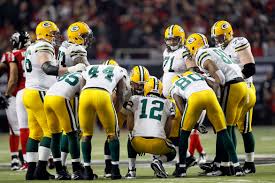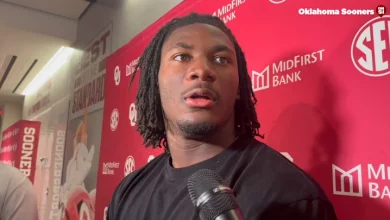Let’s improve the NFL playoff structure: six possibilities with their respective benefits, drawbacks, and viability

The NFL playoff structure has long been a point of discussion among fans, analysts, and stakeholders alike. The current format, with 14 teams (7 from each conference), sees the top four division winners automatically qualify for the playoffs, while three wild-card teams are selected from each conference. The idea behind the structure is to ensure that division winners receive a reward for their regular-season success, while still giving other teams a chance to compete based on their performance over the entire season. However, as the NFL continues to evolve in terms of talent, parity, and fan expectations, many have questioned whether the current playoff setup is the best model for competitive balance, excitement, and fairness.
Here, we explore six possibilities for restructuring the NFL playoffs, each with its own benefits, drawbacks, and viability. From expanding the field to introducing different seeding systems, each suggestion has the potential to transform how the postseason is perceived and executed.
1. Expand to 16 Teams: Eight Per Conference
One of the most straightforward ways to revamp the NFL playoff structure would be to expand the field to 16 teams—eight teams from each conference. This would allow more teams to have a shot at the playoffs, increasing the level of excitement and inclusivity.
Benefits:
- More Teams, More Excitement: With eight teams per conference, the league would see a broader representation of successful teams. This would keep more fan bases engaged throughout the season, as nearly half of the league would qualify for postseason play.
- Increased Revenue: The extra games would bring in more television rights revenue and possibly lead to increased attendance for playoff games.
- Enhanced Fan Interest: More fan bases would be involved in postseason discussion, allowing for greater engagement with the product.
Drawbacks:
- Less Exclusive: The exclusivity of making the playoffs is diminished. Currently, only 37.5% of teams make the playoffs, but under this structure, half of the league would qualify. This could dilute the value of earning a playoff berth and make the regular season feel less meaningful.
- Lower Quality of Play: Teams finishing with sub-.500 records or having a poor final stretch could make the playoffs, leading to potentially mismatched or uncompetitive games.
- Shortened Rest for Top Teams: The increased number of playoff games would push the postseason further back, potentially creating scheduling issues and reducing rest time for the top-seeded teams.
Viability:
While an exciting option, expanding to 16 teams may not be feasible in terms of preserving the prestige and competitiveness of the regular season. The current system already feels “crowded,” and adding more teams may lessen the quality of postseason football.
2. Eliminate Division Winners from Automatic Playoff Berths
Currently, division winners are guaranteed a playoff spot, regardless of their overall record, while teams with better records can sometimes be relegated to a wild-card spot. A potential change could involve removing the automatic berth for division winners, instead selecting the top 6 teams based on overall record in each conference.
Benefits:
- Truer Reflection of Team Strength: Teams would no longer be rewarded solely for their division performance. The top 6 teams based on performance over the whole season would enter the playoffs, leading to a fairer reflection of the league’s best teams.
- Less “Unfair” Seeding: This eliminates the potential for a 7-9 team to be guaranteed a playoff berth simply because they won their weak division, as has happened in the past.
- More Competitive Playoff Field: The best overall teams, regardless of division, would all have a shot at the playoffs, leading to more competitive matchups.
Drawbacks:
- Weakens Rivalries: Division rivalries are a key element of the NFL season, and by eliminating the automatic berth, it could dilute the importance of divisional games.
- Less Reward for Winning the Division: Divisions are historically a source of pride and competition, and removing this reward may reduce their significance in the eyes of teams and fans.
- Scheduling Changes: The current system relies heavily on divisional matchups. This change would likely require a major overhaul of how the regular season is scheduled.
Viability:
This option is very viable from a fairness and competitiveness standpoint, but it would likely be met with significant resistance from traditionalists and fans who value division play. A middle-ground compromise might involve reducing the automatic benefit of division winners but still giving them some form of advantage.
3. Introduce a 3-Conference Playoff System
In this model, the NFL would break into three conferences, each with 8 teams. At the end of the regular season, the top teams from each conference would face off against one another in a mini-playoff structure before the final two teams from each conference would meet in a championship.
Benefits:
- New Playoff Structure: This format would add an element of novelty to the playoffs, creating potentially interesting matchups and intrigue as teams could be placed in different conferences.
- Elimination of Conference Imbalance: It would prevent the historically weaker conferences from getting an unfair advantage in terms of playoff seeding. More equitable matchups would be possible.
- Increased Focus on Regional Rivalries: The league could use this format to deepen rivalries between teams in the same conferences, potentially creating new rivalries across different divisions.
Drawbacks:
- Conferences May Be Too Unbalanced: The NFL currently has a very competitive balance, but creating three conferences could lead to imbalances in terms of talent.
- Scheduling Issues: Reworking the regular season into a three-conference format would be a logistical nightmare in terms of scheduling, travel, and potential conflicts between team preferences.
- Fan Familiarity: Fans are accustomed to the current conference and division setup, and a drastic change like this could confuse or alienate certain fanbases.
Viability:
This option is likely the least viable due to its complexity. Although it introduces an intriguing structure, the operational and logistical challenges make it a less feasible solution in the short-term.
4. Bye Week for Wild Card Teams
Under the current system, the top seed in each conference gets a bye week while the remaining teams compete in wild-card games. A potential change could involve giving the second-highest seed a bye week, as well as providing it to the top seed.
Benefits:
- Increased Advantage for Top Teams: Giving the second seed a bye week adds more weight to regular-season performance, as finishing higher would become even more advantageous.
- Higher Stakes: Teams will now fight harder for the second seed, ensuring more competitive regular-season matchups.
- Better Rest for Elite Teams: This model would give top teams more time to rest and recover, leading to fresher squads in later rounds.
Drawbacks:
- Longer Wait for Second Seed: The second-seed team could be forced to sit out longer, potentially disrupting their momentum from the regular season.
- Increased Scheduling Complexity: More bye weeks mean more adjustments in terms of how the playoff schedule is designed, potentially making the postseason feel a bit stretched.
Viability:
This option is somewhat viable, as it could be a relatively simple tweak to the current system without major overhauls to the regular season or playoff structure.
5. Double Elimination Playoff Format
This concept would involve introducing a double-elimination format, where teams must lose twice before they are eliminated. Under this system, teams would have to drop two games in order to be out of contention for the championship, which would add a layer of excitement and drama to the playoffs.
Benefits:
- More Opportunities for Underdogs: Teams that get off to a rough start would still have a chance to rebound and make a comeback, leading to thrilling, high-stakes games.
- Decreased Luck Factor: Under the current single-elimination format, an off day or one bad play can end a team’s season. A double-elimination format would ensure that luck plays less of a role in determining the eventual champion.
- Potential for More Storylines: Teams that come back after a loss would be fascinating to watch, and the format could create more emotional storylines as teams fight to stay alive in the tournament.
Drawbacks:
- Increased Time and Fatigue: Double elimination would require more games, which could lead to longer playoff seasons and increased fatigue for players.
- Scheduling Issues: The current format is tightly packed into a three-week period. Introducing double-elimination would require additional games, creating potential scheduling conflicts.
- Potential for Less Excitement: The single-elimination format creates a sense of urgency and pressure that might be diluted in a double-elimination structure.
Viability:
While the double-elimination concept is intriguing, it is not a realistic option due to its impact on scheduling, fatigue, and overall viewer engagement. The extra games could become too much, especially during a packed postseason.
6. Intra-Division Playoffs
In this format, only division winners would be allowed into the playoffs, but each division would hold an internal playoff bracket to determine the winner. This would be a system where division champions face off with other division champions before meeting in the broader playoff field.
Benefits:
- More Competitive Divisional Play: Teams would be incentivized to focus on winning their division and engaging in direct competition with other division winners.
- Potential for Dramatic Matchups: With no wild cards, the most evenly matched teams would enter the postseason, which could lead to more competitive and exciting games.
- Focus on Rivalries: Divisional matchups would take on even greater importance, which could help strengthen rivalries and increase fan engagement.
Drawbacks:
- More Predictable Playoff Field: With only division winners qualifying, there could be less unpredictability, and some talented teams would miss out.
- Less Fairness: The “best” teams might not always win their divisions, and this format could lead to teams with worse records than wild cards entering the playoffs.
Viability:
While feasible, the intra-division playoff concept may not be popular with fans and owners, as it removes the chance for wildcard teams to enter the playoffs and reduces the competitiveness of the league as a whole.









